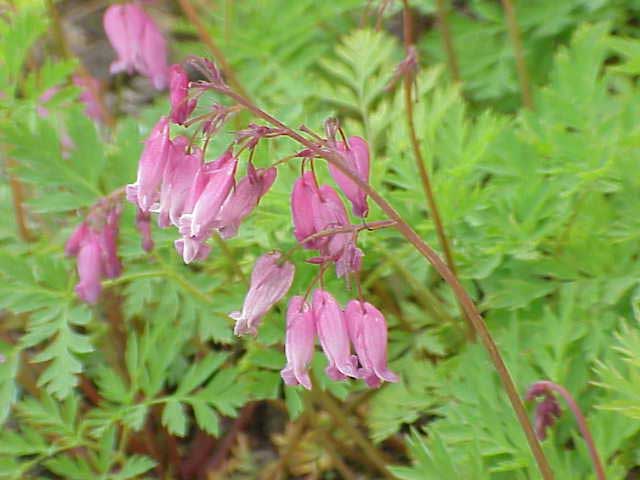Dicentra eximia (*) Cladus: Eukaryota Name Dicentra eximia (Ker Gawl.) Torr., Fl. New York 1: 46. 1843. Synonyms Basionym * Fumaria eximia Ker Gawl., Bot. Reg. 1: pl. 50. 1815. Homotypic * Bicuculla eximia (Ker Gawl.) Millsp. Fl. W. Va. 327. 1892. Heterotypic * Diclytra formosa Elliott, Sketch Bot. S. Carolina (Elliott) 2: 177. 1822, nom. illeg. non DC. (1821).
* Flora of the State of New York 1:46. 1843 ----------- Dicentra eximia (Wild Bleeding-heart) is a flowering plant in the family Fumariaceae, native to North America. It occurs mainly in the southeastern half of the continent, from Pennsylvania south to Georgia. It typically grows in rocky woods and ledges, and has a rose pink - purple bloom with a mass of greyish-green, fern-like foliage. It is a herbaceous perennial plant, reaching a height of 1-1.5 ft. * Horn, Cathcart, Hemmerly, Duhl, Wildflowers of Tennessee, the Ohio Valley, and the Southern Appalachians, Lone Pine Publishing, (2005) p 71, ISBN 978-1-55105428-5 Source: Wikispecies, Wikipedia: All text is available under the terms of the GNU Free Documentation License |
|

